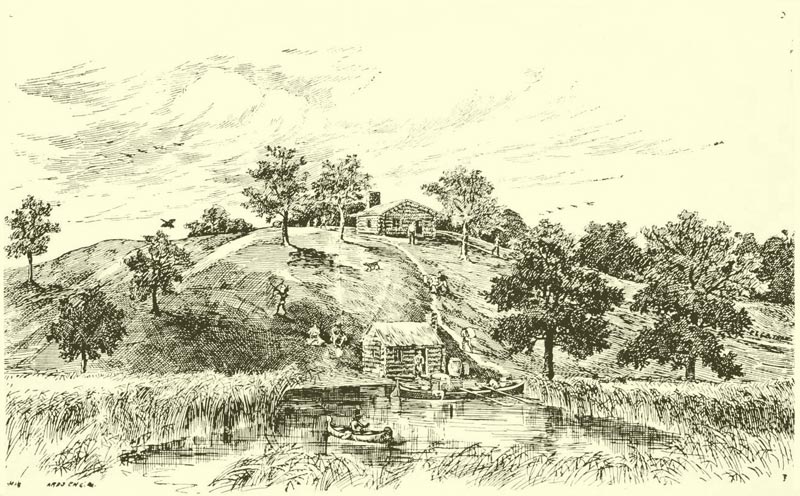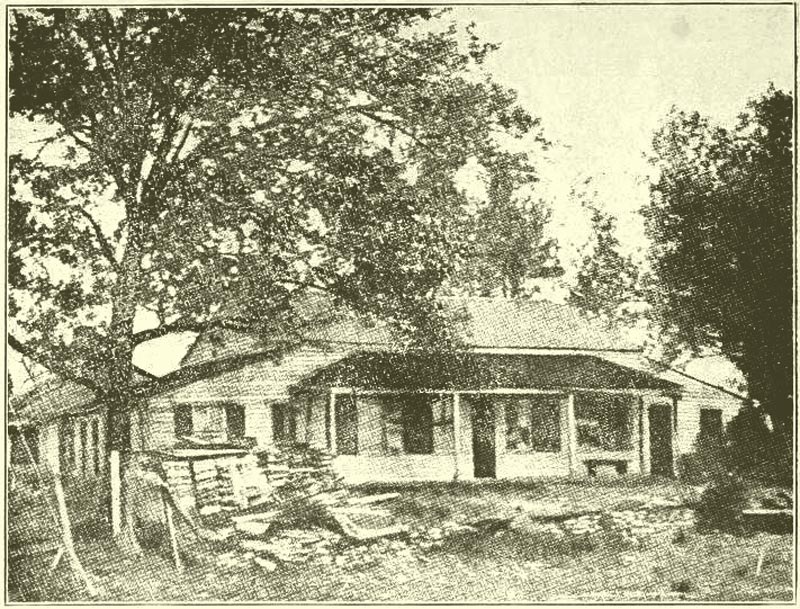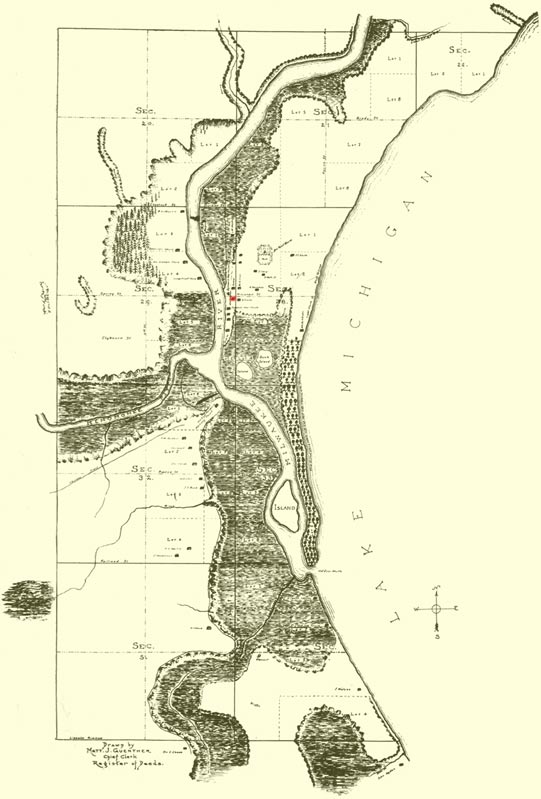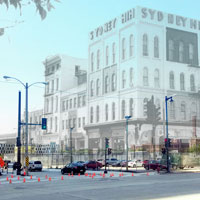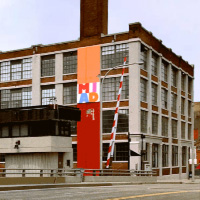This story initially ran two years ago, but we share it again today, the 202nd anniversary of Juneau's arrival.
When the United States celebrated its bicentennial in 1976, it was, as you'd expect, an international affair. But this week, the 200th anniversary of the arrival in Milwaukee of the first permanent white settler, Solomon Juneau, may pass with nary a notice even here at home.
In his 1936 "A History of Milwaukee," William George Bruce wrote, "Solomon Juneau came here Sept. 14, 1818, and remained for the greater part of his life," adding with some understatement, "he became an important factor in the earlier beginnings of Milwaukee as a hamlet, as a village and as a city."
Of course, Juneau did not arrive in an uninhabited place. Just the opposite, in fact. He set up his homestead at a fertile gathering of the waters that was home to a number of settlements.
He did not wall himself off from the native people he encountered here. He traded with them, appears to have befriended them, and he even married a woman who was descended from them.
On this landmark occasion, it seems only right to recount for today’s Milwaukeeans a bit about this man whose name we know, but whose story might only be vaguely familiar.
Who was Solomon Juneau?
Solomon Laurent Juneau was born in L’Assomption, a suburb of Montreal, on the St. Lawrence River in Quebec, Canada, on Aug. 9, 1793. He was the second son of Alsatian French immigrants Francois and Therese (nee Galarneau) La Tulipe, who, according to "Solomon Juneau: A Biography" – written in 1916 by his granddaughter Isabella Fox – fled France at the dawn of the Revolution in 1789.
"As did many others who left France during those troubled times, they changed their name from La Tulipe to that of Juneau, trying in a way to obliterate all sad memories connected with having to leave the land of their birth and of their honored ancestors," Fox wrote.
According to Fox, Juneau (whose brother Pierre was born in 1795) attended school at L’Assomption before going to "a Catholic college."
It was in the summer of 1816 that Juneau headed out on an adventure that landed him in Mackinac that September, where he encountered Jacques Vieau, who ran trading posts in Mackinac, Green Bay and Milwaukee.
Vieau hired the young Juneau as a clerk first in Green Bay and then, in 1818, in Milwaukee. Shortly after his arrival, Juneau married Vieau’s daughter Josette, and struck out on his own, according to Fox.
"After which year (1818) he was not connected with Mr. Vieaux (sic) in a business way," she wrote.
Josette Vieau Juneau
Josette Vieau was born in April 1803 at Fort Howard, on the west bank of the Fox River in Green Bay, daughter of Jacques Vieau, a Frenchman born at Côte-des-Neiges, another suburb of Montreal, in 1757, and of Angelique LeRoi – granddaughter of a Potawatomi chief named Anaugesa (aka Ah-ka-ne-po-way, which means Standing Earth) – who he’d met upon arriving at Green Bay in 1786.
According to her granddaughter Isabella Fox, Josette – who had "black hair and eyes, a clear olive complexion, a low sweet voice and courteous manner" – did Catholic missionary work among the native peoples.
She married Juneau when she was just 17 at a mission church in Green Bay before, according to Fox, a wedding journey back to Milwaukee "in a bark canoe paddled by Indians.
"She dressed in Indian costume, which style of dress she wore for many years," wrote her Fox. "Of a retiring nature, she mingled little with the incoming white population and rarely spoke English, French being the language used in the home circle."
Fox also quotes early Milwaukee historian James S. Buck as noting, "Many of the first settlers were indebted to this brave-hearted woman for their personal safety, more than once in 1836, when the Indians were anxious to destroy them, which they certainly would have done upon one occasion, had she not interfered to protect them, upon which occasion she stood guard over the whites all the night long during her husband’s absence."
Buck also offered a description of the Vieau homestead in Milwaukee, built in 1795 on a bluff overlooking the Menomonee River Valley, a site now occupied by Mitchell Park.
"The house … stood upon the beautiful grassy knoll just southeast of the present cattle yards. It was one of the most beautiful places then, and it is today, about Milwaukee. I often sit at my window and gaze across the marsh to this knoll; and as I do so, my mind goes back to the time when naught was there but that old log trading house, and in my imagination see the wild scenes that have been enacted there by the … men in the olden times, all re-enacted again. The last corn dance held in Milwaukee by the Indians, was upon that hill in August 1836."
The birth of Milwaukee
Though others, like Vieau and Francois LeClaire, who had a trading post on what is now the northwest corner of Water Street and Wisconsin Avenue, came before him, Juneau is the one who stayed and who set down roots.
After their marriage, the Juneaus built a cabin near LeClaire’s and Solomon – described by his granddaugher as 6-feet 4-inches tall with brown curly hair and large grey eyes, with "a jovial temperament, kind and benevolent, friend and confidant of all" – worked as an agent of the American Fur Company, a position he’d hold for 20 years.
Fox, who surely wasn’t an objective observer, said of her grandfather that, "The Indians looked upon him as a father, and whatever advice their beloved ‘Solomo’ gave them, was accepted and followed in every detail. His word was sacred, and once given, nothing could make him change his promise either in public or private life."
Juneau reportedly learned English in 1831, the same year he became an American citizen, but, says Fox, "was (also) well versed in many Indian dialects, especially the Menominee tongue."
In 1835, the Juneaus built a new home on what is now the site of the Mitchell Building on the southeast corner of Michigan and Water Streets, and, later, a larger house on the corner of Milwaukee Street and Juneau Avenue (then Division Street), where they remained until 1852.
In addition to his business and raising a family – the Juneaus had 17 children, three of whom died quite young – Solomon Juneau actively worked to develop his new home into a thriving city.
When a post office was established here in 1835, Juneau was appointed the first postmaster. In 1837, Milwaukee became a village and its residents elected him the first president. Nine years later, when the village grew into a city, Juneau was elected its first mayor. He donated land for the first courthouse – on the site of today’s City Hall – and also gave materials for its construction. He donated land for the construction of St. John’s Cathedral, for the first lighthouse and for a college near his home on Milwaukee and Juneau.
Fox added that Juneau, surely in the interest of boosting the population of his village – where he owned much land whose value would rise with demand – also donated land, "to those who were too poor to buy … and in many instances the material for building.
"Aside from his interests on the east side," Fox noted, "he had property on the west side. He and Byron Kilbourn were warm personal friends and close business associates in many enterprises. He assisted Mr. Kilbourn in the platting of the west side. Mr. Kilbourn was an intimate friend of Mr. Juneau’s entire family."
After Milwaukee
In 1847, the Juneaus built a summer home on land along the Rock River in Dodge County. Five years later, they moved there full-time, founding the village of Theresa – named in honor of Solomon’s mother – which he had begun platting in 1848.
There, Juneau ran a general store, a sawmill and grist mill, and continued his trade with the native people. As in Milwaukee, he also served as postmaster.
However, Josette died in 1855 while at her daughter’s house in Milwaukee, reportedly devastating Solomon, who died the following year – having "reputed(ly) … left quite a fortune" – on the Indian Reservation at Keshena while there to make a payment on behalf of the U.S. government.
He was, according to his granddaughter 63 years, 3 months and 5 days old (but who’s counting). He died 360 days after Josette.
According to a UW-Green Bay website, "Some 700 Indians including Chiefs Oshkosh, Corrow, Larriet, and Keshena marched with his funeral bier to the burial grounds at the Keshena reservation."
A century ago, Isabella Fox wrote that Juneau’s "grave on the Keshena reservation is still open, and from its center an evergreen tree has grown, a fitting emblem to his revered memory."
In 1866, Juneau's remains were reinterred at Calvary Cemetery in Milwaukee.
I’m not sure if that’s still true, but here in Milwaukee, few need to be reminded of the existence of Solomon Juneau, the man who arrived here 200 years ago this week and built the city we all call home.
The presented illustrations originally appeared in "Solomon Juneau; a biography," by Isabella Fox.


